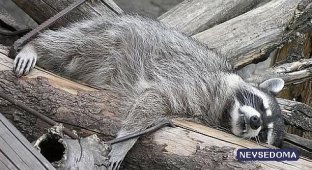Sea otters cannot help but attract attention. These dexterous and cute animals are very friendly, and they also know how to use tools. 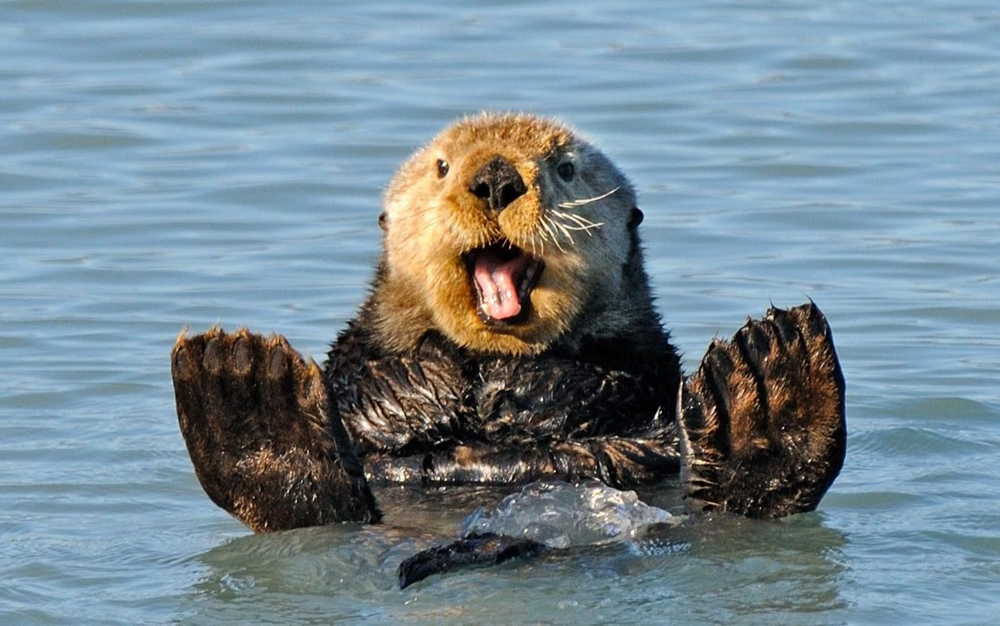
Sea otters or sea otters grow up to 1.5 meters and weigh from 16 to 45 kilos! These are the dimensions of a leopard or cheetah! But despite the size of a large wild cat, the sea otter is amazingly friendly. Its prey includes crabs, shellfish, sea urchins and sometimes fish. Short legs with virtually no claws do a poor job of holding slippery, scaly prey, but this is partially compensated by strong teeth. 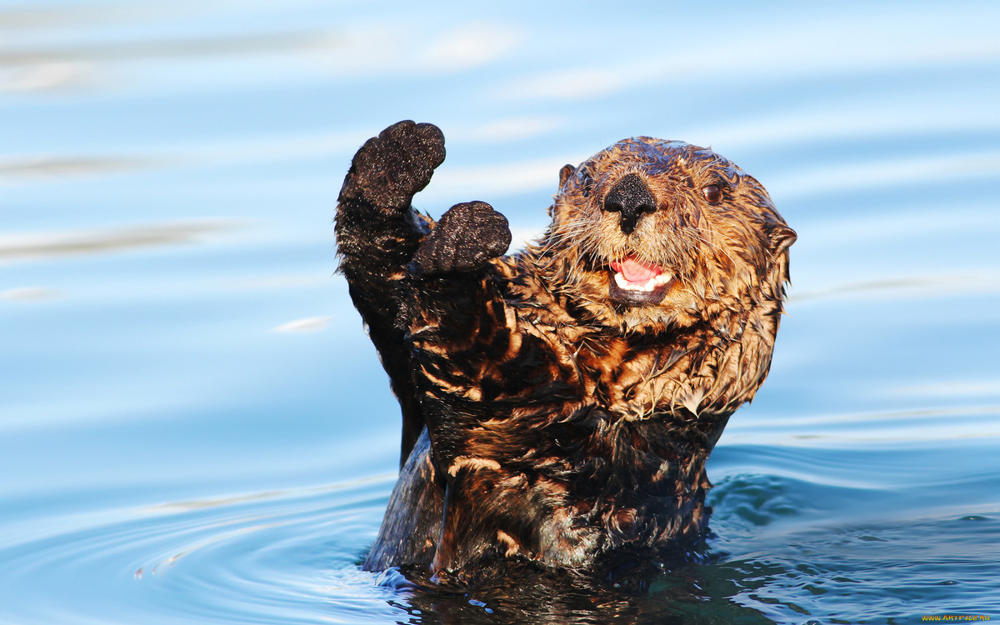
Sea otters are not interested in other animals. They ignore small reptiles and mammals and often share their roosts with seals and sea lions. Scientists say that their peaceful disposition is a forced decision. Any wound or scratch breaks the waterproof cover of thick wool moistened with fat. And since sea otters do not have a large layer of fat, they run the risk of quickly freezing in the cold waters of Alaska and the Far East. 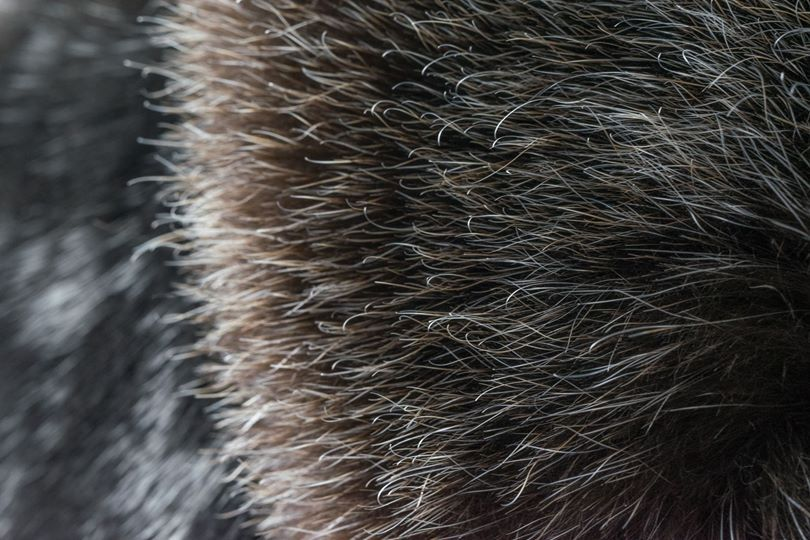
Sea otter fur. Soft, warm and cozy. Due to the demand for it, the species almost became extinct at the beginning of the twentieth century. But now the animals are safe.
However, this is the only weakness in their adaptation to the aquatic environment. Thanks to their flexible spine, sea otters swim gracefully and easily, as if their ancestors never climbed onto land. Animals push forward using their hind legs, the toes of which are fused into a kind of flippers. 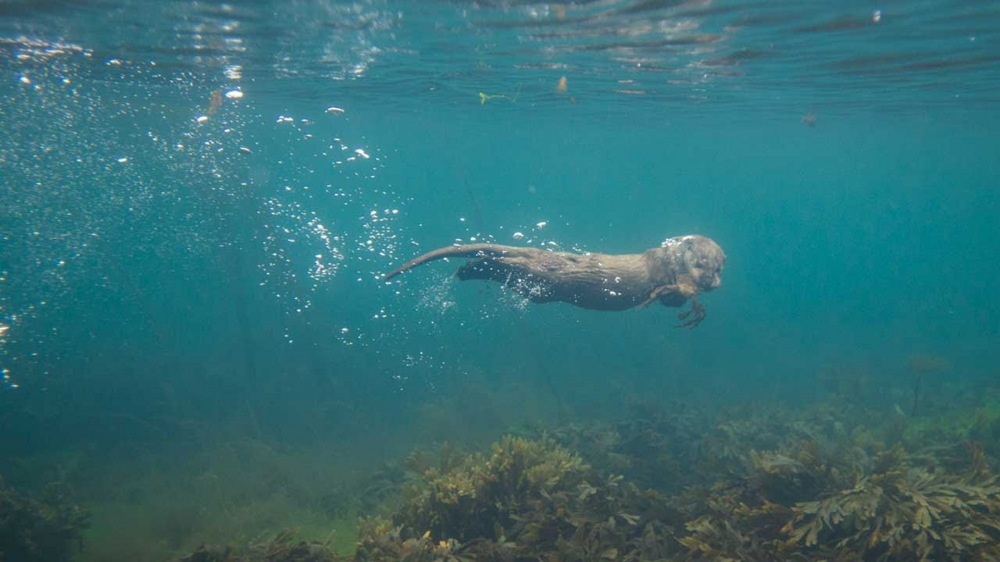
They dive with the same naturalness with which they swim on the surface. Their lungs are huge, the mass of hollow organs reaches 6% of the mass of the entire body. They are able to store a supply of oxygen, which is enough to study the seabed for 8 minutes. During this time, the sea otter descends to a depth of 50 meters. 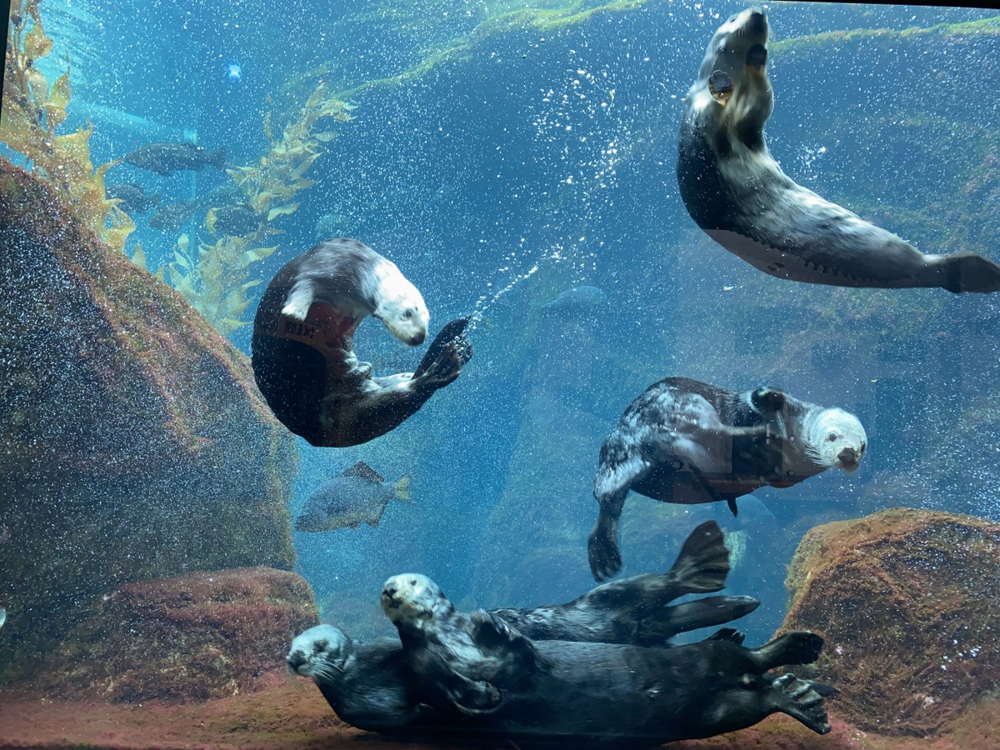
The rest of the time the animals sway peacefully on the waves. They don't fuss or rush. But not because their only enemies are the killer whale and the polar shark - the largest predators of ecosystems. They just have to save every calorie. And unnecessary fuss is a waste of energy. 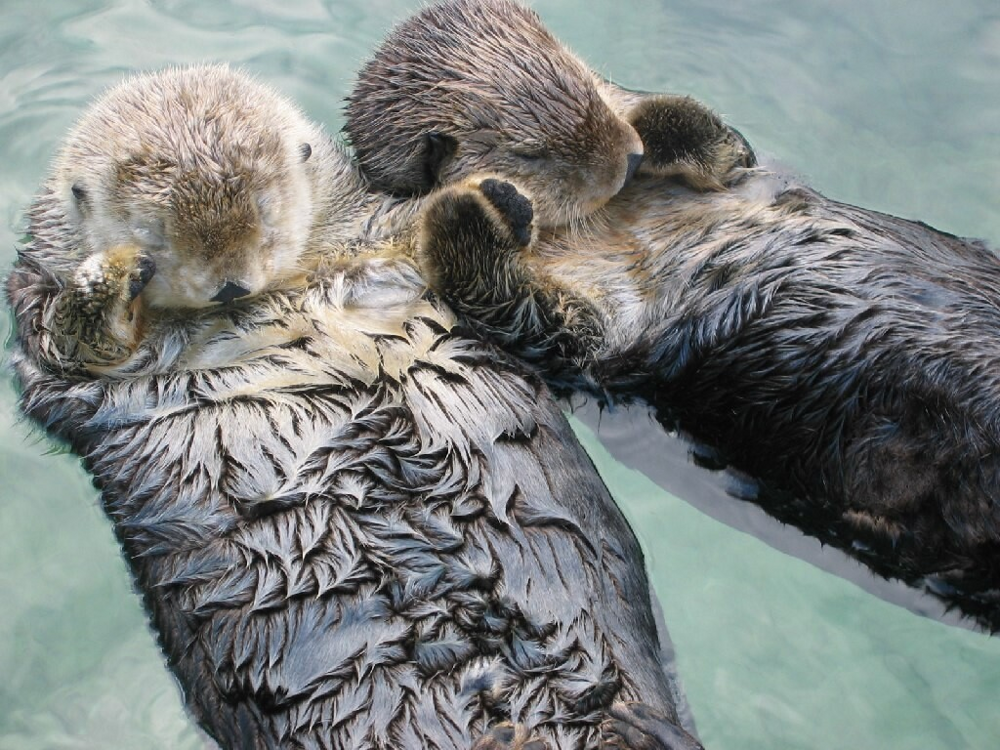
In order not to swim far from the shore, sea otters during sleep take their relative with one paw and cling to algae with the other. Effective and damn cute!
Sea otters spend almost their entire lives in water. Swimming, warming the body and maintaining oneself on the surface of the waves takes a lot of energy. In the open sea, animals not only feed, but also communicate, mate and raise offspring. A sea otter swims up to 2 kilometers per day, so it requires a huge amount of food - up to 25% of its body weight per day. To accommodate such volumes of meat, the gastrointestinal tract of animals greatly increased in size. 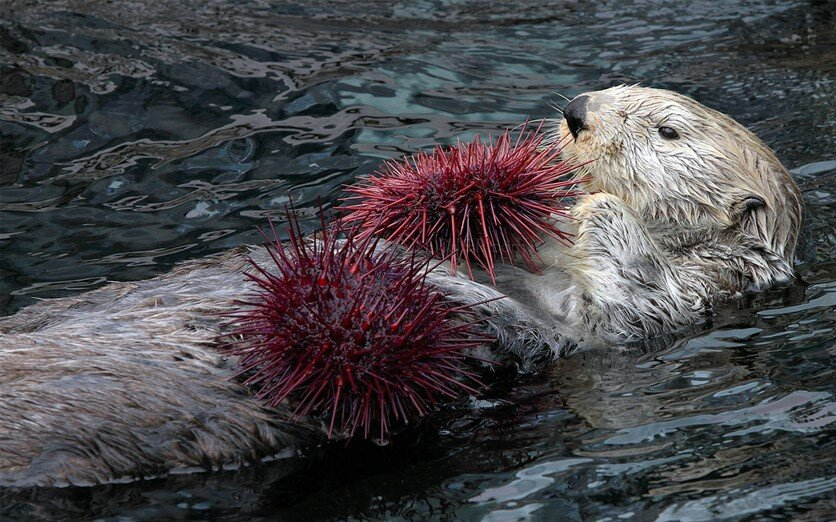
The need for strict economy of resources has led to unexpected results: Sea otters have learned to use tools! They break shells of mollusks against each other, and open the shells of crayfish with the help of stones. 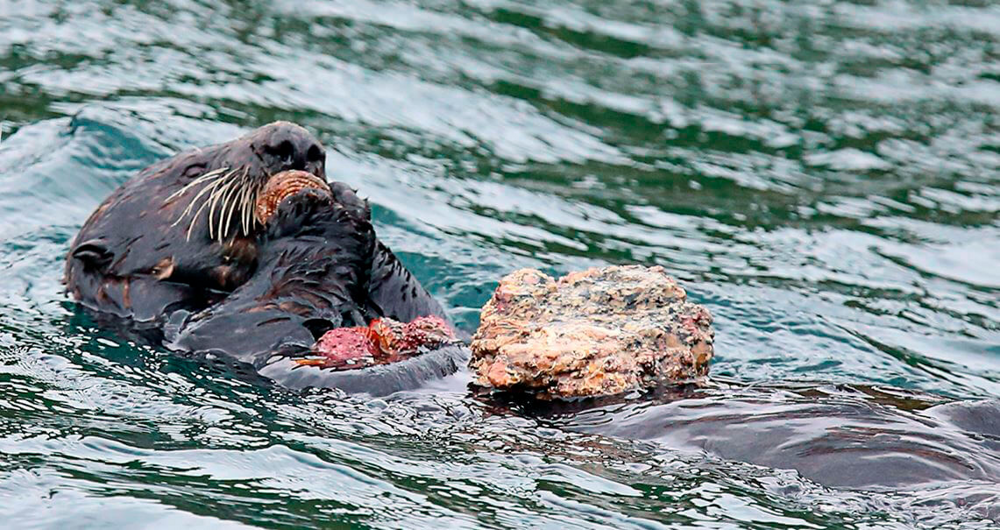
Moreover, otters have been doing this for so long that it has affected their anatomy. Their teeth became smaller and lighter. They are more suitable for crushing prey than for gnawing. The front legs have also changed. They are unsuitable for swimming, but movable hands with sensitive pads deftly squeeze stones and shells. And in order not to constantly hold the pebble with their “hands”, otters now have a pocket! Under the left paw there is a fold of skin where the sea otter stores its tools. Thanks to this, the animal does not need to look for a new pebble every time. +1 to saving strength and energy! 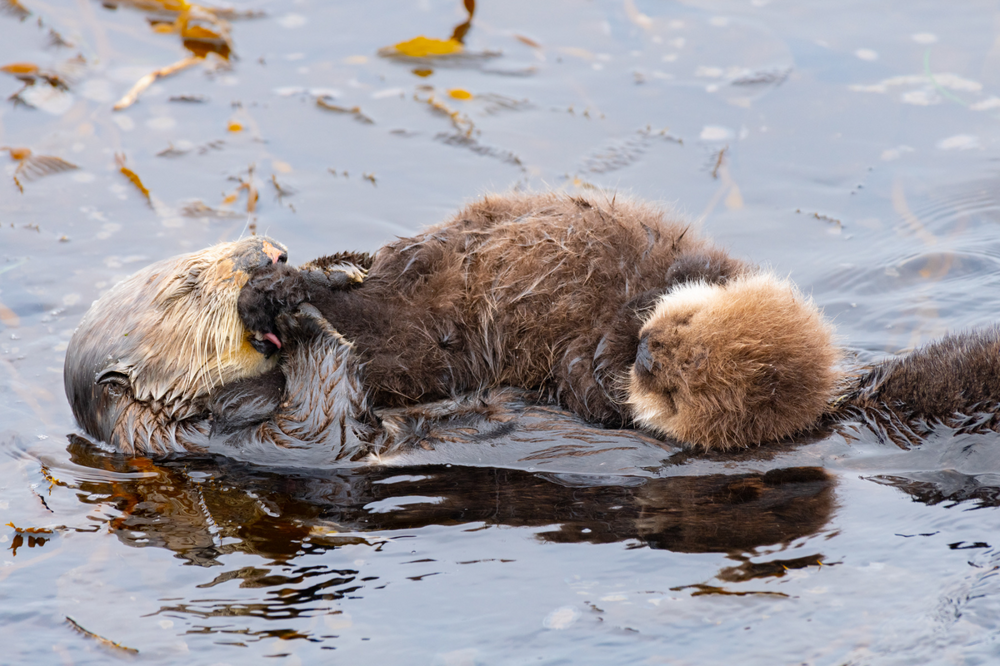
Basic skills in handling stones are genetically inherent in sea otters. Research shows that even children separated from their mothers very quickly understand how to use stones and choose the most suitable ones. Which is not surprising. Their childhood period is short - no more than 6 months. 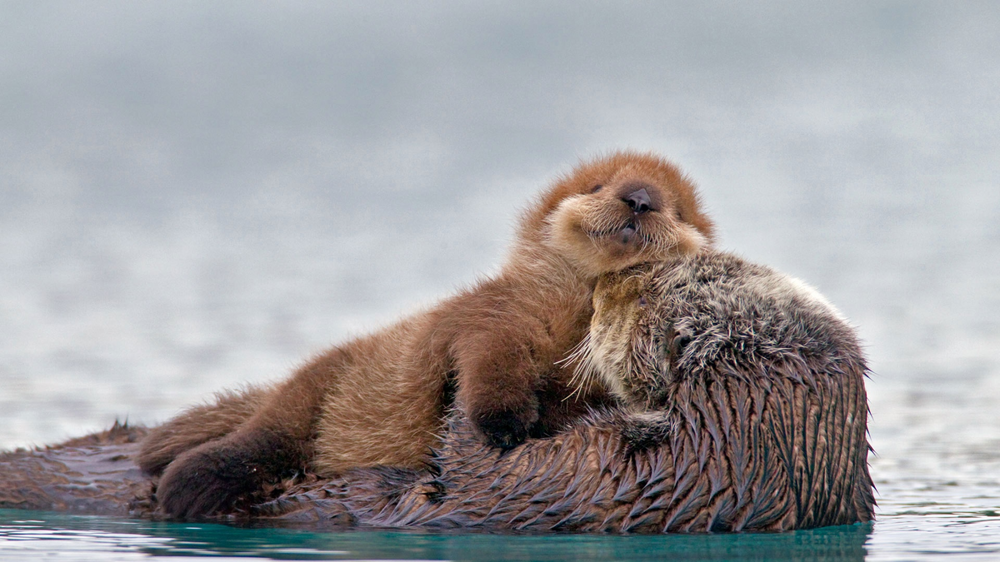
At first, the otter floats on its mother, like on a raft. His fur is absolutely notadapted for diving and long swimming. But she will be able to keep the baby afloat for some time if he suddenly falls into the water. The fur coat of the cubs is fluffy and thick. Air pockets form between the hairs. They push the baby to the surface like a safety vest. But within six months, young people reach a weight of 7-11 kilograms, acquire a woolen wetsuit and completely master the difficult craft of catching shellfish.
Add your comment
You might be interested in:













